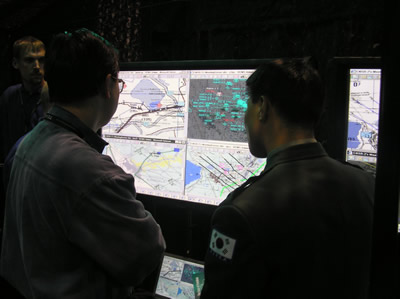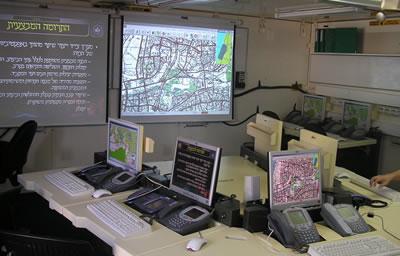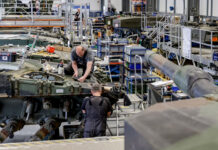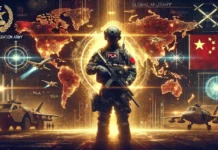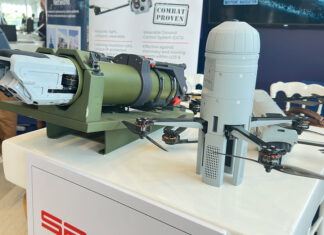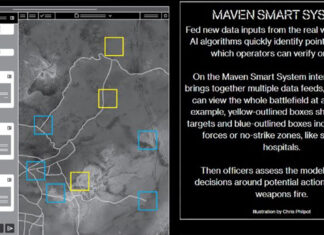Start < Page 6 of 7 >
Modern C4I systems are feeding huge amounts of information into the tactical operating center (TOC) where such information is processed, interpreted and displayed on maps and status reports. Such situational presentations are generated by computers, and displayed at the Command Posts (CP) on large screens or relayed to remote subscribers, via high speed networks. Unfortunately, such connectivity is not provided with existing tactical radios. Therefore, tactical commanders are usually disconnected from these vital information feeds when leaving the TOC to deploy with their command vehicles.
This becomes most critical at brigade and division levels, where many different operations are executed simultaneously over a large area. To support commanders on the move and at forward deployments, modern command vehicles are being upgraded designed to field integrated data-communications and display systems, utilizing wireless data networks and mobile satellite terminals, which facilitate on-the-move communications, and enable the commander and part of his staff to continue and exercise effective command and control over the entire force under their command.
The latest trend in C2 tech is Command Post Of the Future (COPF), a system currently deployed at the division level, enabling division and brigade commanders to discuss and collaborate when processing information, share ideas, and attend virtual meetings without being at one place. Commanders attending the virtual meeting don’t have to be in the same room, or even the same country, to discuss and draw on the same map. CPOF was developed as a technology demonstration by DARPA. The prototype was deployed with the 1st Cavalry division and is currently operating in Baghdad, connecting the division HQ and five brigades. DARPA is expanded the system with the introduction of advanced visualization tools that let brigade commanders communicate, collaborate and share information. The first unit scheduled to receive the enhanced CPOF is the 3rd Infantry Division.
Additional parts of this article:
- Military Command and Control (C2) and Mobile Networking
- Mobile Cellular Networks in Military Use
- Military Wireless Data Networks
- Tactical Mobile Broadband Networks
- Tactical Satellite Communications Networks
- Command and Control (C2) Systems for the Tactical Echelon
- Dismounted & Mobile Command and Control (C2) Systems

